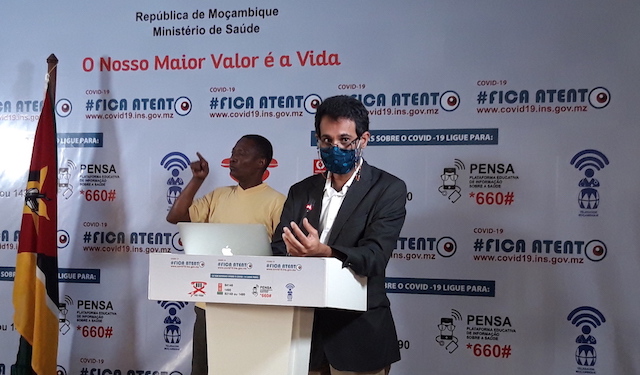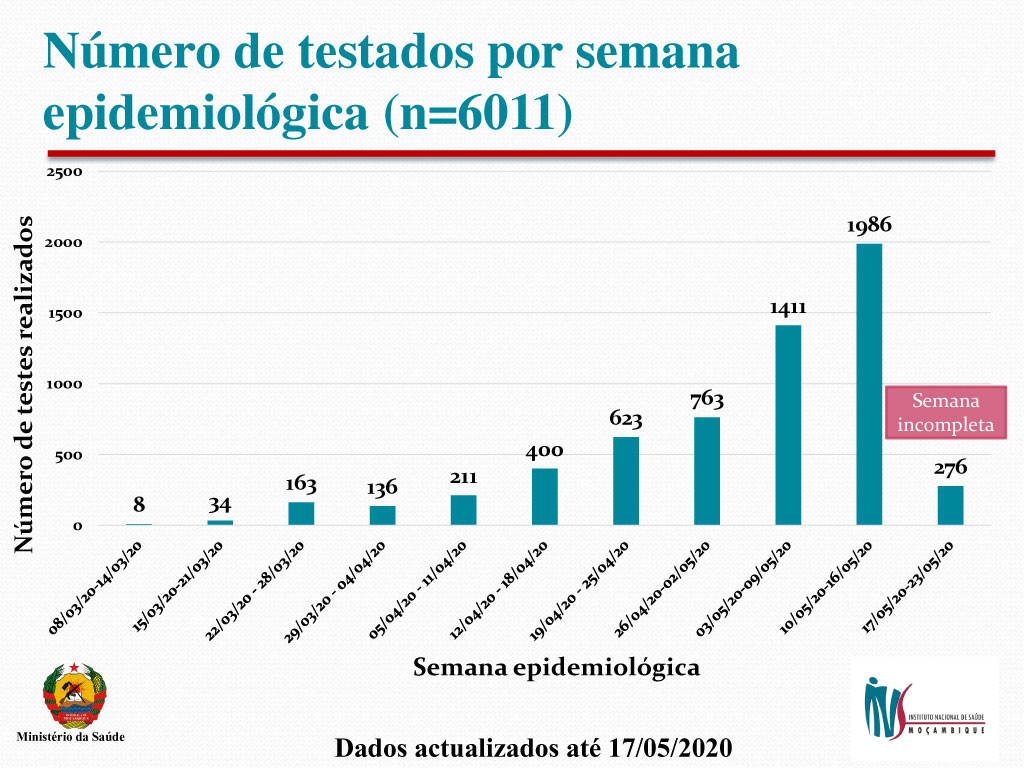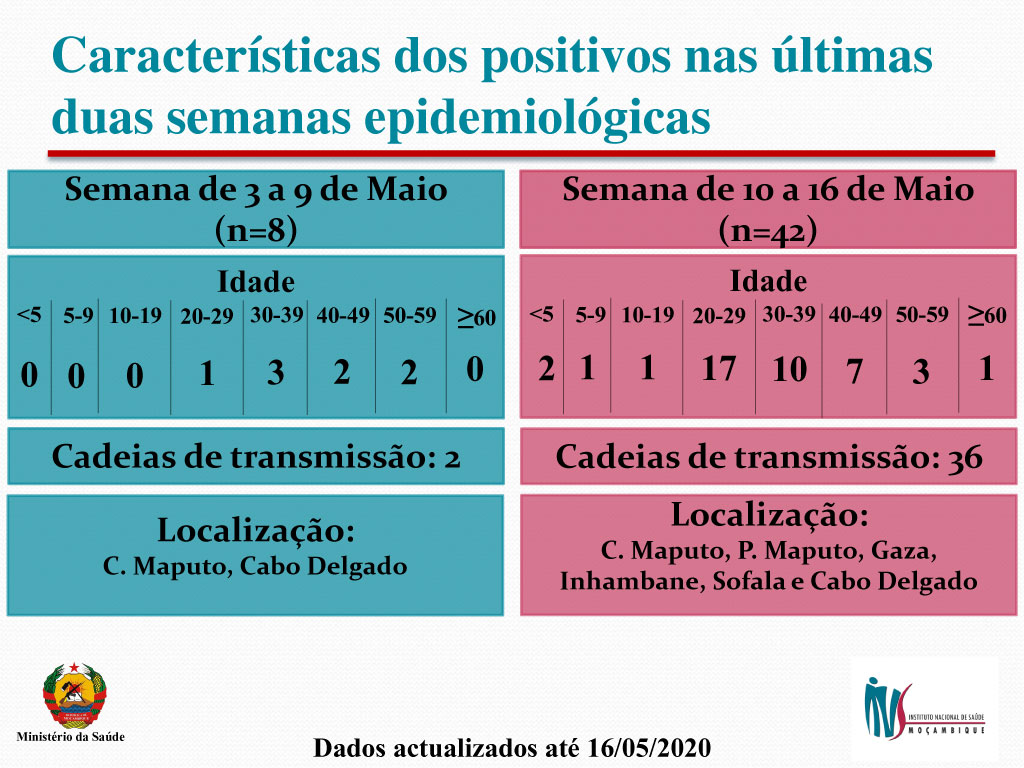Mozambique 50th anniversary of independence celebrations: Private sector ready to make its ...
Mozambique: “Window of opportunity still exists” to avoid “transition from epidemic of sporadic cases to community transmission”; 36 new Covid-19 transmission chains from 10 to 16 May

Photo: A Verdade
Without including the two new Covid-19 foci identified on Sunday (May 17), Mozambique recorded, in the epidemiological week of 10 to 16 May, 42 more positive cases and 36 new transmission chains, placing the country close to the most dramatic scenario of the pandemic so far.
“Our country is currently in a process of transition from an epidemic of sporadic cases to an epidemic of community transmission” warned the Director of the National Institute of Health (INS), Dr Ilesh Jani. “The window of opportunity to prevent community transmission still exists, but it will not be permanent, so it is necessary to intensify compliance with preventative measures if we are to avoid the worst.”
On Saturday, the 52nd day since the diagnosis of the first case of the new coronavirus in Mozambique, the pandemic appeared to have exploded, with the identification of 36 new transmission chains whose source of infection has not yet been identified. Only in the provinces of Zambézia, Nampula and Niassa are there no patients. “Our country until last week had an epidemic that was based on sporadic cases, and now the World Health Organization classifies Mozambique as having an epidemic based on foci of transmission.” Dr Ilesh Jani outlined.
Dr Ilesh Jani pointed out this Saturday (16) that the Covid-19 transmission patterns in Africa are changing, and for the worse. “Now we have many more countries on our continent checking for community transmission. There were seven last week; now there are 25. In the countries neighbouring Mozambique, we already had South Africa, but now we have Zambia and Tanzania with community transmission too.”
“In the last week, we reported 42 positive cases,” Dr. Jani pointed out on Saturday. “This is the largest number of cases in an epidemiological week since the beginning of the pandemic in our country (…) We started to have children [who tested positive], two under five years of age, one in the five-to-nine-year-old age group, and the number of women with positive cases has also started to increase. This is because, up until last week, our epidemic was dominated by the cases in the Afungi camps (where mostly men work), but now we are starting to see transmission chains outside.”
“In the epidemiological week that ended on May 16, we verified 36 different transmission chains, against two transmission chains in the previous week – a substantial increase,” the INS Director warned, expressing concern about the worsening of domestic transmission chains detected in health units, which rose from one to 24 in just one week, while imported cases rose only from 9 to 11.
Next evolution will be to epidemic with community transmission, with spread to more vulnerable demographic profile and clinical cases
“Several of these transmission chains are currently under investigation, so at this point it is possible that later we will discover that they are the same transmission chain,” Dr Ilesh Jani pointed out, as he stated that: “All indications point to a dramatic increase in transmission chains throughout this last epidemiological week.”
Asked if the health authorities were already unable to relate the confirmed cases through transmission chains – given that, in the end, the decision on the pandemic depends on the politicians – the Director of the National Institute of Health was cautious. “Mozambique has moved from the epidemic phase with sporadic cases to epidemic with foci of transmission,” he declared. “The next evolution would be an epidemic with community transmission,” a scenario which, in addition to an increase in positive cases, could be accompanied by a spread to a more vulnerable demographic profile than the current one, and with more clinical cases requiring hospitalisation.
Faced with @Verdade’s insistent questioning, Dr Ilesh Jani admitted that “clearly our country is currently in a process of transition from the epidemic of sporadic cases to an epidemic of community transmission”.
However, the doctor at the head of Mozambican epidemiologists believes that “the window of opportunity to prevent community transmission still exists, but this window will not be permanent. So it is necessary to intensify compliance with preventative measures to avoid the worst. This action depends on society as a whole”.
By Adérito Caldeira
















Leave a Reply
Be the First to Comment!
You must be logged in to post a comment.
You must be logged in to post a comment.